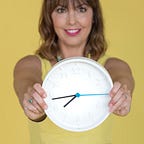Design Thinking with Year 1 Works. Here’s Proof.
When I was consulting for NoTosh, I noticed that many early years teachers found it challenging to envisage how Design Thinking might look for their age group. I often had questions such as, ‘But, how do we know it works?’
It does work.
And, although I would model various strategies for the Early Years, I thought that it might be helpful to show how the whole process might look.
I team-teach Year 1 with the fabulous Kathryn O’Connell at the Australian International School Phnom Penh. We are an Australian Curriculum and IB school and we teach PYP with our students.
We follow the NoTosh Design Thinking model and match it with Kath Murdoch’s Integrated Inquiry steps as follows:
- Immersion (including Provocation) / Tuning In & Finding Out
- Synthesis / Sorting Out & Making Conclusions
- Ideation / Going Further
- Prototyping / Taking Action
- Feedforward
In this example, our Transdisciplinary unit was How we express ourselves and the central idea was Our environment inspires creativity.
Immersion (Tuning In and Finding Out)
We launched our unit of inquiry with a provocation: Anyone and everyone is creative by nature. So we asked ordinary people to share how they were creative. We asked our school Principal to visit the group and share how she is inspired by flowers and is creative through her photography of these flowers. Each day, she shares a message of wellbeing by disseminating these photographs to her friends and family.
We also interviewed an everyday poet and a Foundation teacher who is also a quilter. To integrate with English, we used famous visual artworks such as Starry, Starry Night by Van Gogh to inspire narrative writing.
We also immersed in the ideas of Nellie Gibson who provoked her students about ‘What is beauty?’. Our Year 1 version of this was, “What is creativity?’ and so we asked each student to draw what they thought might be creative. We collected data using Google Classroom to use for our Mathematics Inquiry into Statistics and Probability.
Synthesis (Sorting Out and Making conclusions)
Rather than a project nest, this time, we used several forms of data to synthesise our central idea.
- We used a deconstruction template to determine the meaning behind each part of the central idea (we used this as a pre and post-check-in).
2. We created data displays based on the questions we asked in Google Classroom about creativity and inspiration.
3. We used then synthesised this data to create a working definition of ‘creativity’.
Finding a “problem” to solve was, seemingly difficult. But then we began to notice that there were some spaces in our school that could be better developed to inspire creativity.
Our PYP Coordinator reminded us that the Makerspace needed development and so, she presented this problem to our Year 1 students.
*Back to Immersion
What!?!
We all realised that, in order to design something for others, we needed to talk to them about it. We were already well-practiced in interviewing from our ‘expert interviews’ and we had investigated collecting data in Mathematics. This time, our students were agents of the data collection and synthesis. They determined the questions, gathered data in person from other students, and created their own data display.
We recruited another expert to share with us how learning spaces can inspire creativity. We also visited the Design Lab in the Secondary building and interviewed Mr. Brian who has previously designed Makerspaces. Naturally, we watched some clips about Makerspaces.
4. Ideation
Armed with an understanding of creativity, the impact of spaces upon creativity AND the data they collected from students, each student drew ideas of what might be included in the Maker Space.
NB. Each student doing this first ensures everyone has a voice and a contribution.
To share ideas, students voted on the best options via a gallery walk.
5. Prototyping
In teams, students placed the best options on a floor plan template (in negotiation with each other).
6. Feedforward
Students justified their choices verbally with the Year 1 teachers and were given feedback before they attempted their final prototype.
NB. We had planned to share these prototypes with our experts and other students before making a third prototype but alas, time slipped us by.
Students then presented their final prototypes back to our PYP Coordinator along with their data displays as justification of their choices.
Check-in in a year’s time to see how the Makerspace has developed!
